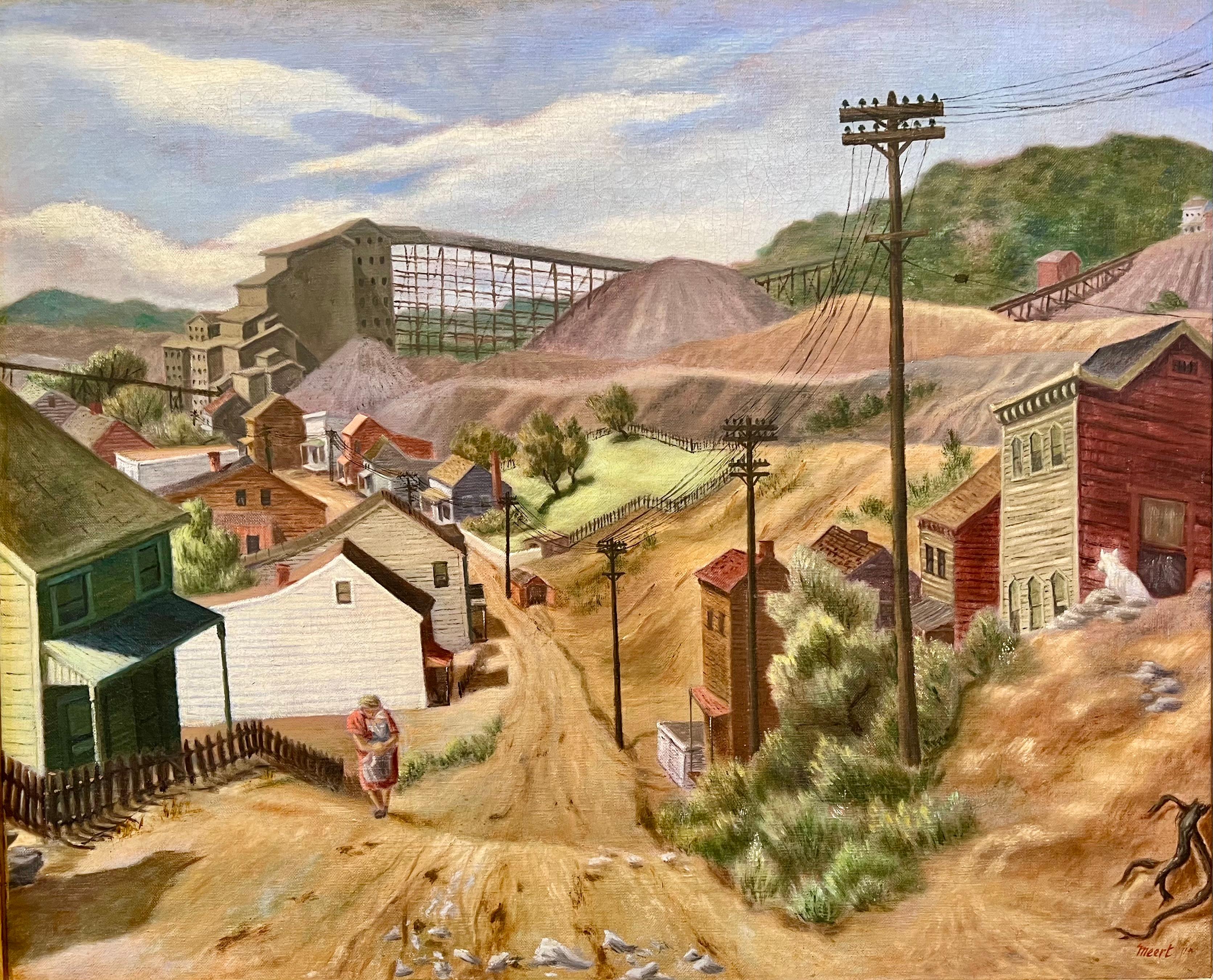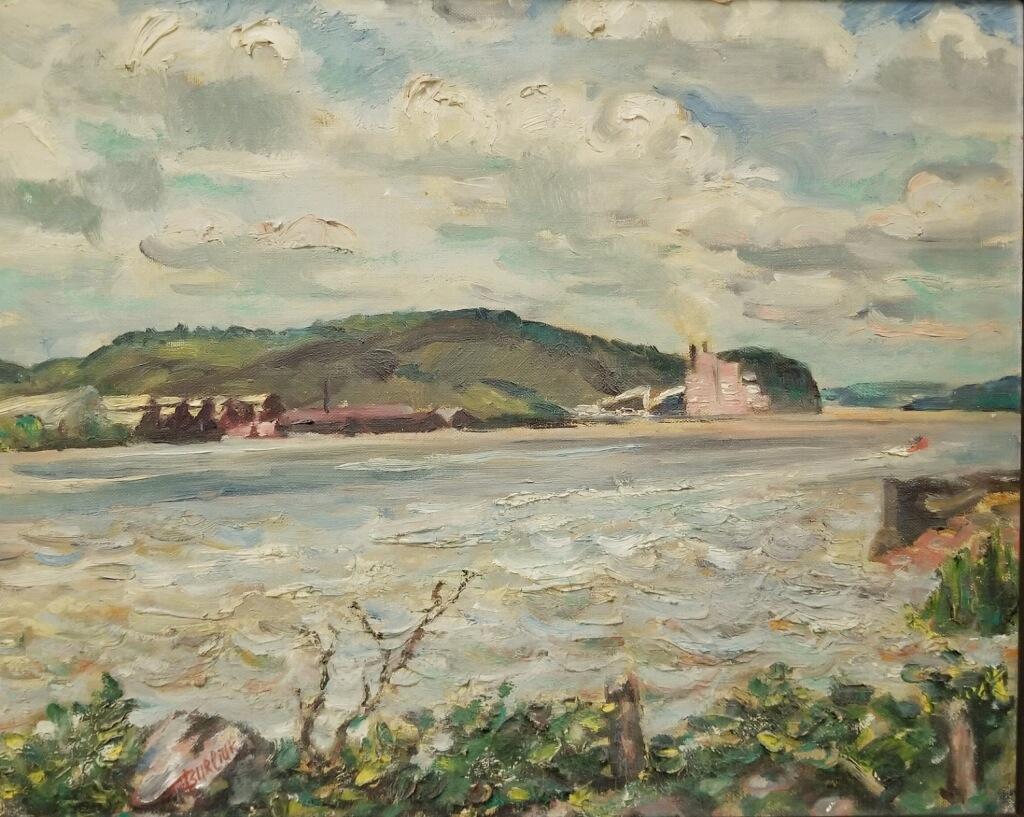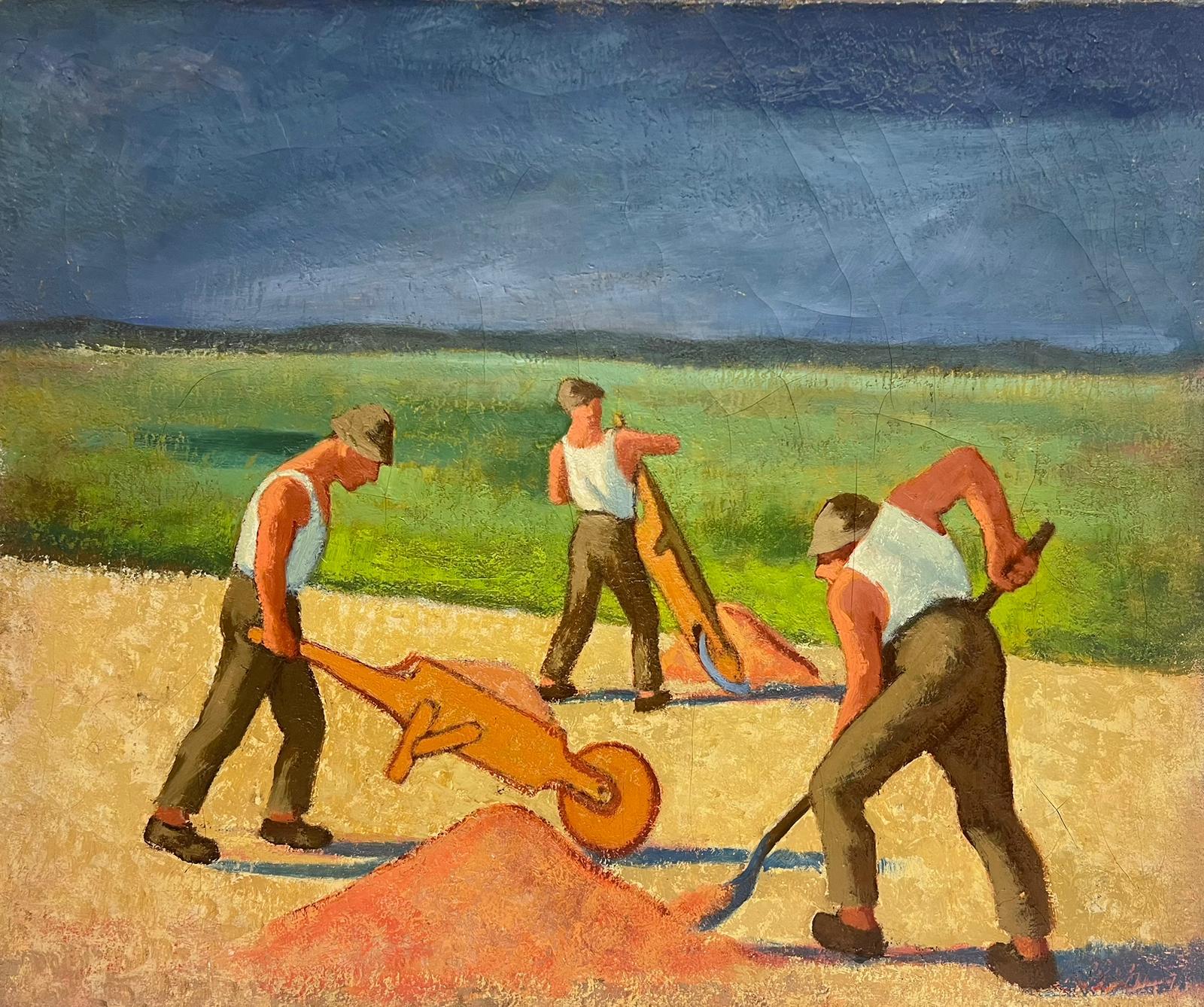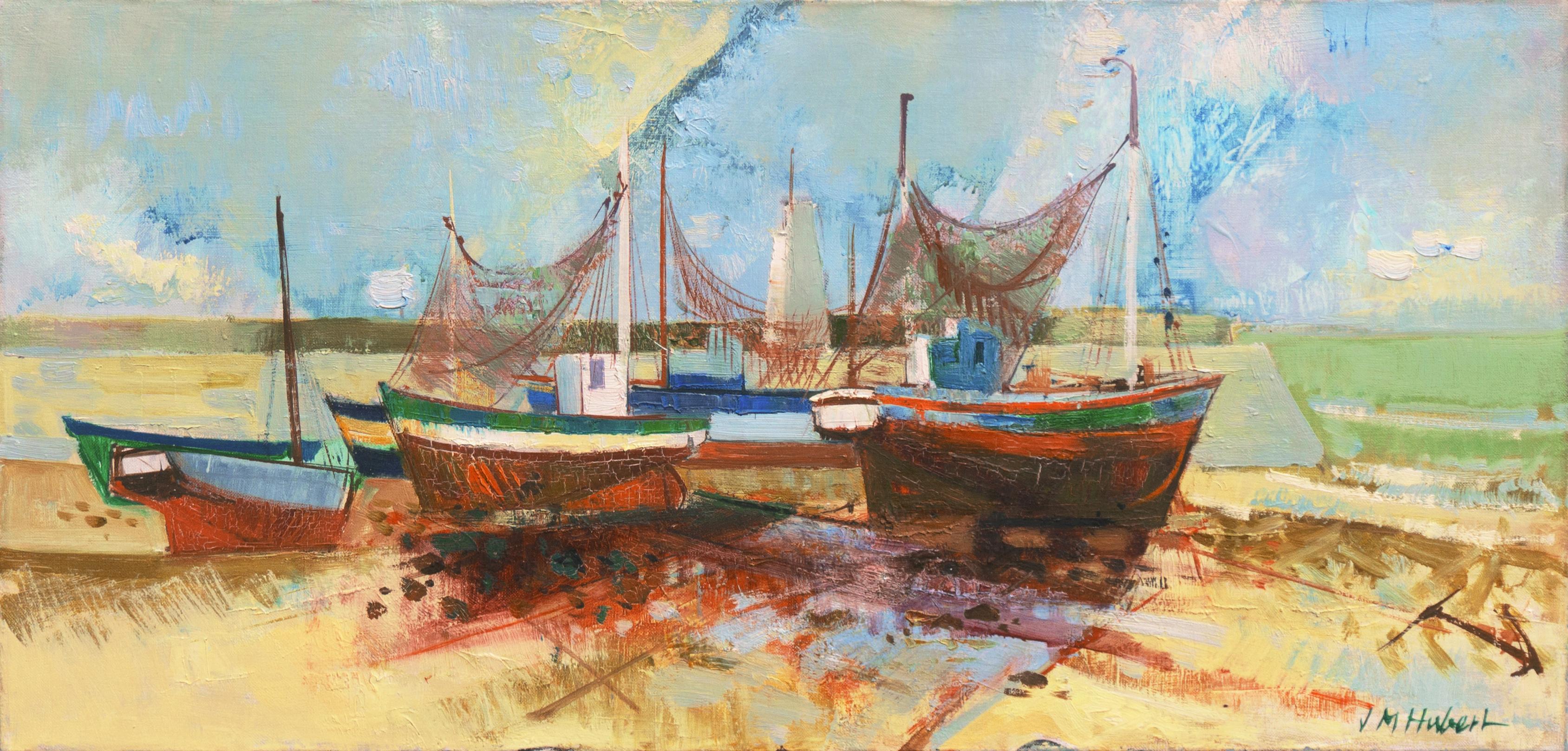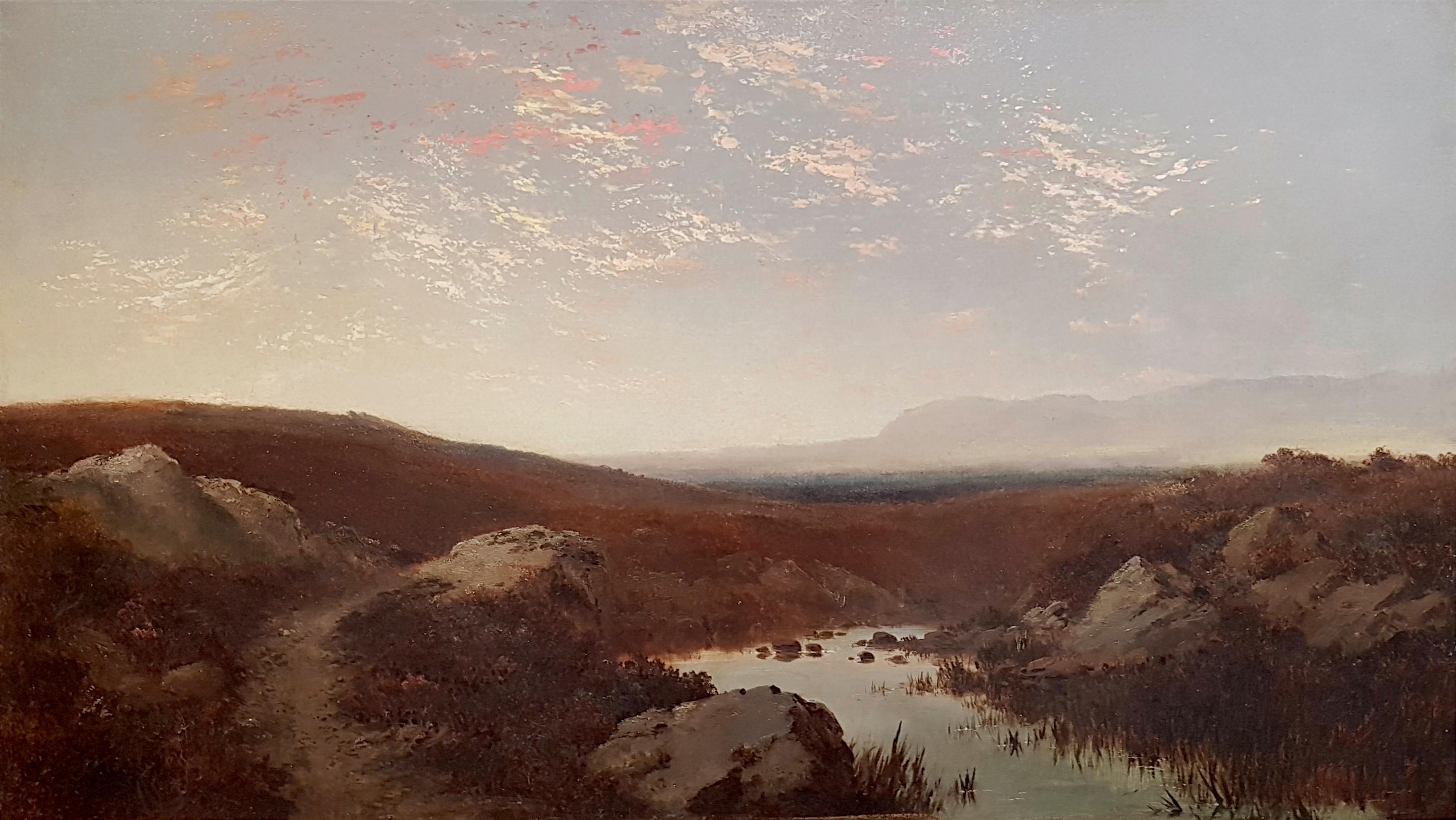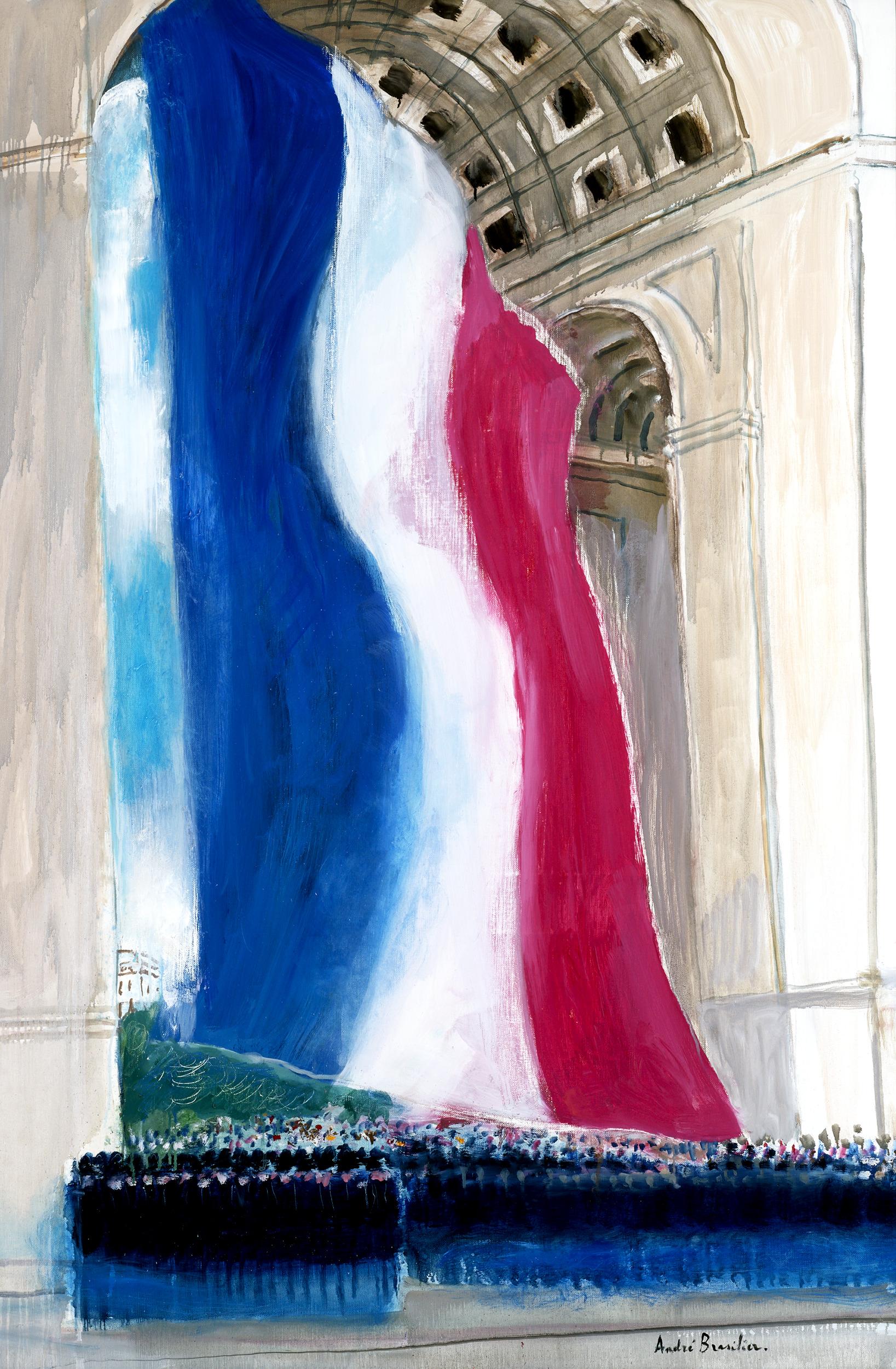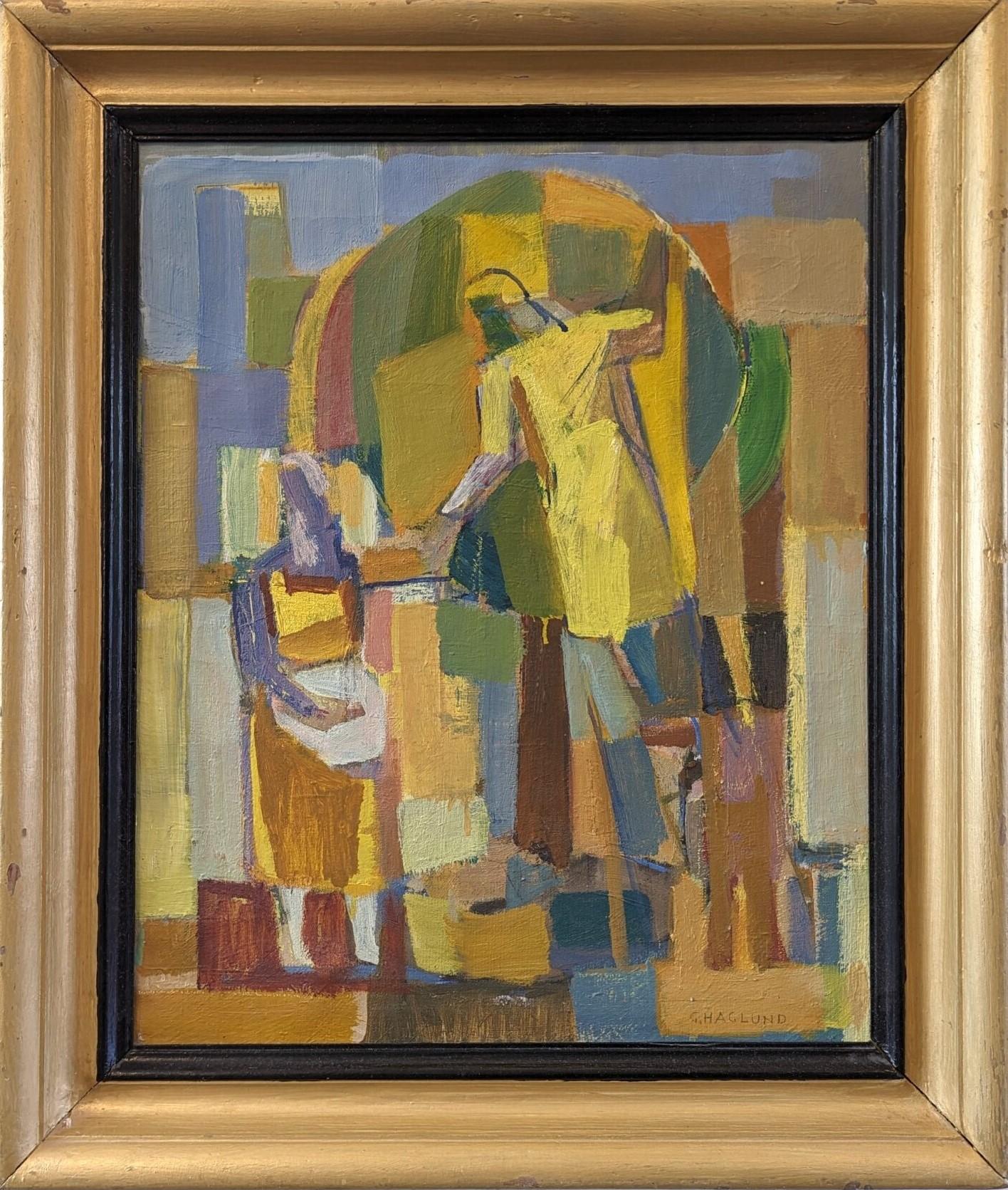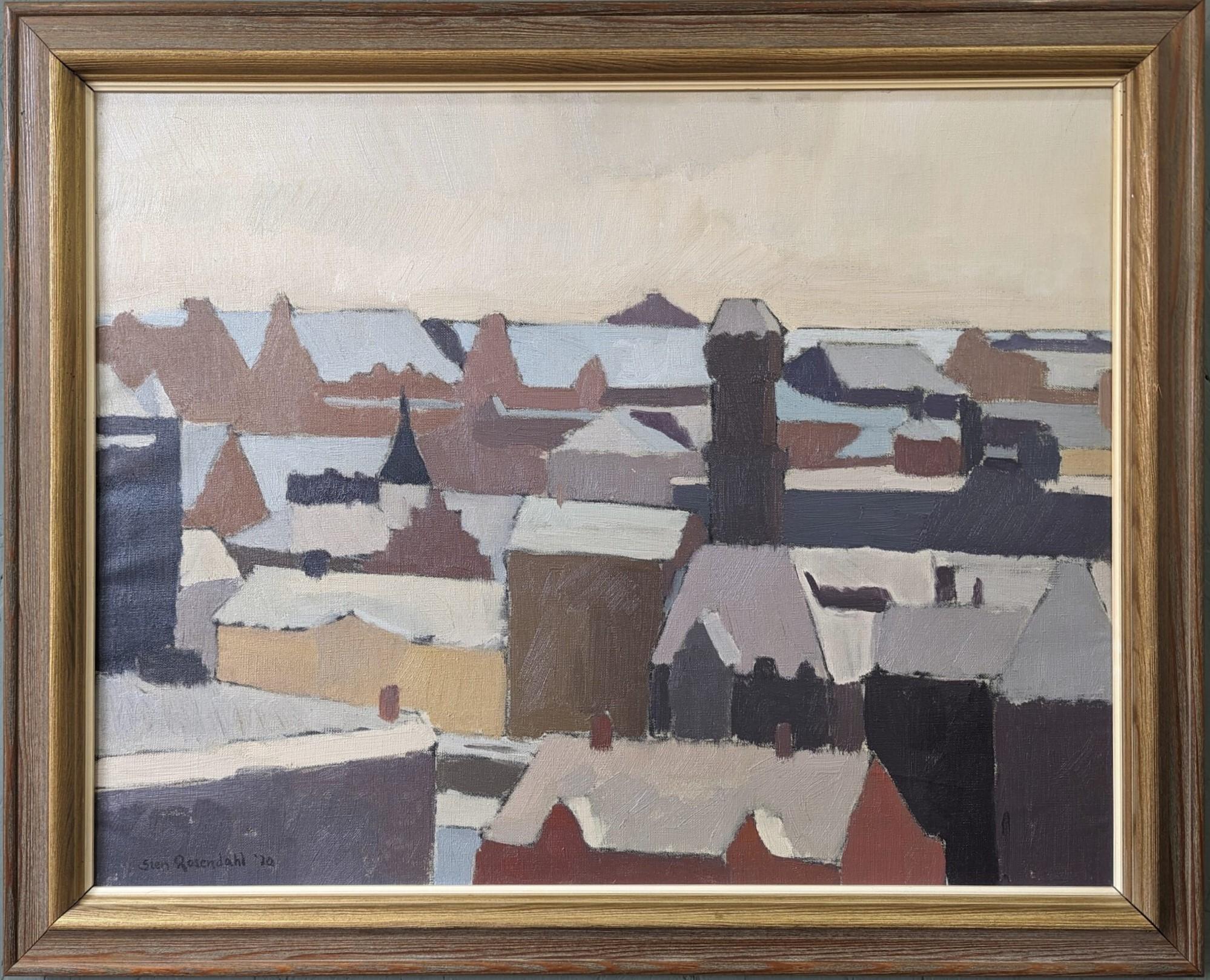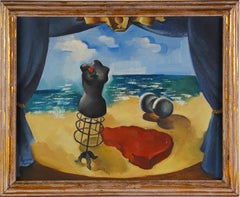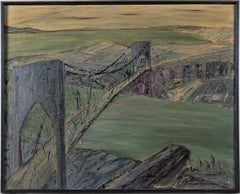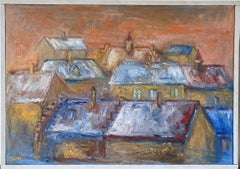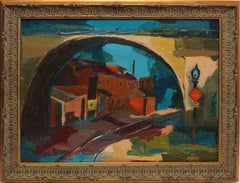
American School, Modernist View of a Cityscape.
View Similar Items
Want more images or videos?
Request additional images or videos from the seller
1 of 11
UnknownAmerican School, Modernist View of a Cityscape.1940
1940
About the Item
About the Seller
4.9
Platinum Seller
These expertly vetted sellers are 1stDibs' most experienced sellers and are rated highest by our customers.
Established in 1970
1stDibs seller since 2015
2,381 sales on 1stDibs
Typical response time: 1 hour
More From This SellerView All
- Vintage American School Handsome Young Male Model Portrait Oil PaintingLocated in Buffalo, NYAntique American school modernist portrait painting. Oil on canvas, circa 1950. Signed . Framed. Image size, 26L x 32H.Category
1940s Modern Portrait Paintings
MaterialsOil, Canvas
$796 Sale Price20% Off - Vintage Signed American Surreal Exhibited Beach Scene "Femininity" Oil PaintingBy Harry LongLocated in Buffalo, NYAntique American modernist oil painting by Harry Lane. Oil on canvas, circa 1940. Signed. Exhibited. Framed. Image size, 20L x 16H.Category
1940s Modern Landscape Paintings
MaterialsCanvas, Oil
$1,196 Sale Price20% Off - Mid Century Modern California Bridge Landscape Signed San Francisco Oil PaintingLocated in Buffalo, NYEarly American modernist painting from California. Oil on canvas. Nicely framed. Signed. Image size, 30L x 24H.Category
1940s Modern Landscape Paintings
MaterialsCanvas, Oil
- Antique American Modernist Tropical Woman Portrait Artist Studio Oil PaintingLocated in Buffalo, NYOil on board. Great color and thick impasto. Signed illegibly. Framed. Image size, 17.5L x 14.5HCategory
1930s Modern Landscape Paintings
MaterialsOil, Canvas
$1,196 Sale Price20% Off - Antique Southern School Civil War Cannon Modernist American Landscape PaintingLocated in Buffalo, NYNice quality modernist painting. Oil on canvas. Framed. Image size, 16L x 12H.Category
1930s Modern Landscape Paintings
MaterialsCanvas, Oil
$636 Sale Price20% Off - Antique American School Modernist Landscape Signed Western Oil on PaperLocated in Buffalo, NYSigned illegibly lower left. Oil on paper. 10 x 8.Category
1920s Modern Landscape Paintings
MaterialsOil, Canvas
$596 Sale Price25% Off
You May Also Like
- Mid-Century Modern Vintage Street Scene Oil Painting - Houses at Sunset, FramedLocated in Bristol, GBHOUSES AT SUNSET Size: 44 x 62 cm (including frame) Oil on canvas A stunning mid century modernist oil landscape painting depicting rows of houses at sunset. The rooftops of the ho...Category
1950s Modern Landscape Paintings
MaterialsOil, Canvas
- Gold Mine, Central City, ColoradoBy Joseph MeertLocated in Los Angeles, CAThis painting is part of our exhibition America Coast to Coast: Artists of the 1930s Goldmine, Central City, Colorado, oil on canvas, 36 x 28 inches, c. 1936, signed lower right, ex collection of Platt Fine Art, Chicago, Illinois (label verso). About the Painting Joseph Meert’s painting, Goldmine, Central City, Colorado, depicts the short-lived resurrection of a once prominent city just outside Denver. Central City was founded in 1859 soon after John Gregory struck gold in the area. As word spread, thousands of miners converged into “Gregory’s Gulch” and its surroundings became known as the “richest square mile on earth.” Mining production quickly increased resulting in Central City to becoming Colorado’s largest city in the early 1860s. Despite some technical difficulties transitioning to lode mining and the rise of competition from Leadville, Central City remained an economic boom town through the turn of the century. But, with every boom, there is a bust. World War I marked the end of Central City’s prominence as ore production ground to a halt and by 1925, the town’s population shrank to only 400 people. The desperation of the Great Depression and a nearly 100% increase in the price of gold lured labor and capital back to Central City. Meert painted in Colorado during the mid-1930s, a time when he created his most desirable works. It is during this period of renaissance that Meert captures one of Central City's outlying dirt streets bordered by 19th century wooden houses from the town's heyday and the more recently installed electric lines leading to a distant gold mine. A lone figure trudges up the hill, a mother with a baby in her arms, putting us in mind of the rebirth of the town itself. Meert had solo exhibitions at the Colorado Springs Fine Arts Center in 1936 and the Denver Art Museum. Although it is not known whether Goldmine, Central City was included in either of these exhibitions, it seems likely. Moreover, the painting is closely related to Meert’s painting, The Old Road, which was painted in 1936 and exhibited at the Corcoran Gallery of Art in Washington, DC and at the Dallas Museum of Art. About the Artist Joseph Meert was a well-regarded painter and muralist, who initially made a name for himself in the American Scene and later as an abstract expressionist. Although initially successful, Meert struggled financially and with mental illness later in life. He was born in Brussels, Belgium, but moved with his family to Kansas City, Missouri. As a child, a chance encounter at the Union Pacific Railyard changed his life. Meert happened upon a worker repainting and stenciling a design on a railroad car. Meert later recalled that this experience introduced him to the idea of being a painter. Without support from his father, Meert obtained a working scholarship to the Kansas City Art Institute. After four years at the Kansas City Art Institute, Meert studied seven years at the Art Students League and in Europe and Los Angeles. At the Art Students League, Meert fell under the spell of Thomas Hart Benton and Stanton MacDonald-Wright. In 1931, he befriended Jackson Pollock. By 1934, Meert was part of the Public Works of Art Project when he met his wife, Margaret Mullin...Category
1930s American Modern Landscape Paintings
MaterialsCanvas, Oil
- A SeascapeBy David BurliukLocated in Rancho Santa Fe, CASigned: Lower left Framed dimensions: 23.5 x 25.5 inches Literature: To be included in the forthcoming Catalogue Raisonne by the Burliuk Committee David Burliuk was born into a weal...Category
1930s Modern Landscape Paintings
MaterialsOil, Canvas
Sold$6,800 - The Market #2 - by Marc ZimmermanBy Marc ZimmermanLocated in Carmel, CAThe universal farmers market is bustling with action. Geometric stalls with intense color coupled with contrasting blue arches creates the dynamism in this work of art. The Market #...Category
2010s American Modern Figurative Paintings
MaterialsCanvas, Oil
- 1950's French Modernist Oil Men Manual Labour Working in Field with WheelbarrowsLocated in Cirencester, GloucestershireThe Labourers French School, mid 20th century oil on canvas, unframed canvas: 24 x 29 inches provenance: private collection, Marseille condition: very good and sound conditionCategory
Mid-20th Century Modern Landscape Paintings
MaterialsCanvas, Oil
- Jerusalem Old City Cityscape Israeli Modernist Oil Painting Signed in HebrewLocated in Surfside, FLSigned Nathanson. Could be the famous artist Avraham Naton (Natanson) I am not certain. it is a very lovely Modernist Israeli landscape. Avraham Naton (Natanson), Israeli, born in Bessarabia, 1906-1959. Avraham Naton was born in Rani, Bessarabia to a large secular family. In 1935, after Art studies in Romania, he immigrated to the Land of Israel and settled, first, in Givat Haim and later in Ramat Gan. From the 1940s he worked as an Art teacher in Ramat Gan and Givataim. In 1948 he worked as an illustrator at BaMahane Newspaper. He was one of the Founders of New Horizon Group. Between 1952-1959 he was a member of the Milo Club and served as the club secretary. Education 1930-33 Art Academy, Bucharest, Romania Teaching 1940's Ramat Gan and Givataim Awards And Prizes Jerusalem Prize for Painting and Sculpture 1942 Dizengoff Prize 1953 Milo Club Prize New Horizons, The Ofakim Hadashim art movement began with a group of artists who mounted an exhibition in Tel Aviv's Habima national theater in December 1942, under the name "The Group of Eight". The group evolved into a coherent artistic movement only after the founding of the state of Israel in 1948. Members of the school included Arie Aroch, Zvi Meirovitch, Avraham Naton (Natanson), Avigdor Stematsky and Yehezkel Streichman. The work of sculptor Dov Feigin also appeared in the catalog of the 1942 exhibition, though it was not displayed. In February 1947 five of the original members of the group joined Joseph Zaritsky...Category
1950s Modern Landscape Paintings
MaterialsCanvas, Oil

